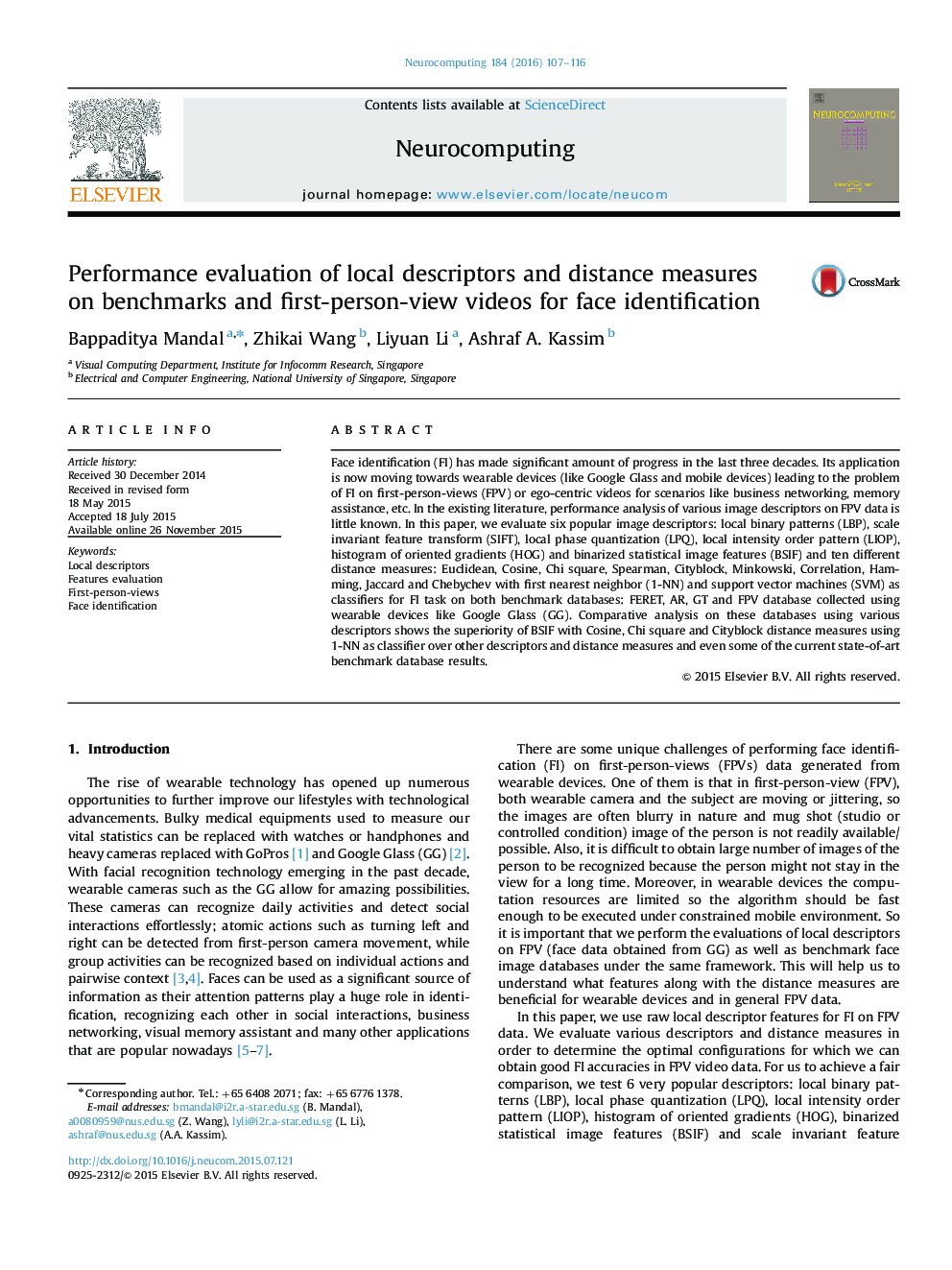| Article ID | Journal | Published Year | Pages | File Type |
|---|---|---|---|---|
| 405946 | Neurocomputing | 2016 | 10 Pages |
Face identification (FI) has made significant amount of progress in the last three decades. Its application is now moving towards wearable devices (like Google Glass and mobile devices) leading to the problem of FI on first-person-views (FPV) or ego-centric videos for scenarios like business networking, memory assistance, etc. In the existing literature, performance analysis of various image descriptors on FPV data is little known. In this paper, we evaluate six popular image descriptors: local binary patterns (LBP), scale invariant feature transform (SIFT), local phase quantization (LPQ), local intensity order pattern (LIOP), histogram of oriented gradients (HOG) and binarized statistical image features (BSIF) and ten different distance measures: Euclidean, Cosine, Chi square, Spearman, Cityblock, Minkowski, Correlation, Hamming, Jaccard and Chebychev with first nearest neighbor (1-NN) and support vector machines (SVM) as classifiers for FI task on both benchmark databases: FERET, AR, GT and FPV database collected using wearable devices like Google Glass (GG). Comparative analysis on these databases using various descriptors shows the superiority of BSIF with Cosine, Chi square and Cityblock distance measures using 1-NN as classifier over other descriptors and distance measures and even some of the current state-of-art benchmark database results.
